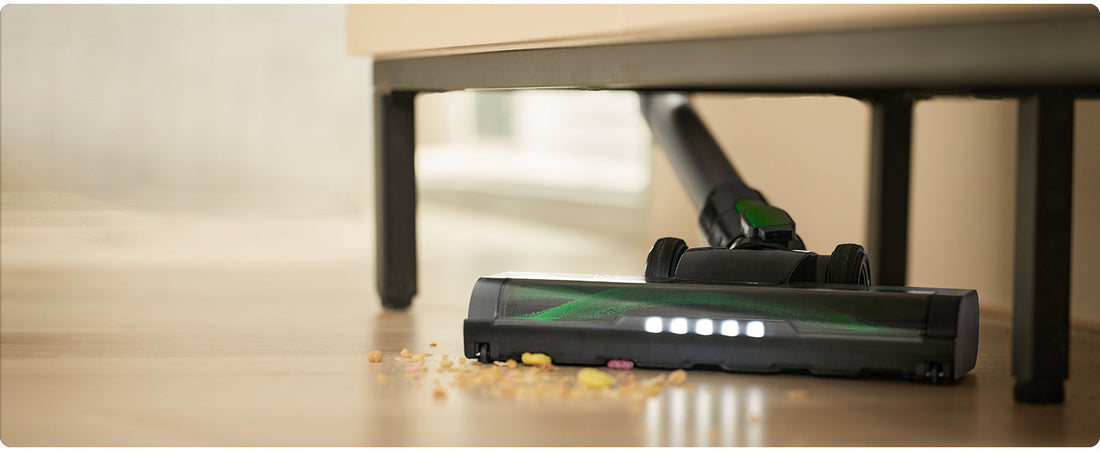You're shopping for a new vacuum cleaner and keep seeing "brushless motor technology" touted as the latest must-have feature. The claims sound impressive - longer lifespan, better efficiency, quieter operation - but is this really groundbreaking technology or just another marketing buzzword?
Let's peel back the layers and discover what brushless motors actually bring to your cleaning routine and whether they're worth the investment.
How Brushless Motors Actually Work: The Simple Explanation
The Traditional Approach: Brushed Motors
For decades, vacuum cleaners used brushed motors that relied on physical contact:
-
Carbon brushes transfer electricity to the motor
-
Constant friction causes wear and tear
-
Sparks and heat generation are common
-
Regular maintenance required
The Modern Solution: Brushless Technology
Brushless motors work differently:
-
Electronic controller manages power delivery
-
No physical contact between components
-
Magnetic fields drive the motor
-
Smart sensors adjust performance
The Real-World Benefits: What Brushless Actually Delivers
Longer Lifespan: The Numbers Don't Lie
-
Brushed motors: Typically 500-1000 hours
-
Brushless motors: 2000-5000+ hours
-
Reduced maintenance: No brush replacements needed
-
Consistent performance throughout lifespan
Energy Efficiency: More Cleaning Power per Watt
-
20-30% more efficient than brushed motors
-
Smart power adjustment based on cleaning needs
-
Reduced heat generation means less energy waste
-
Better battery life in cordless models
Performance Advantages You'll Actually Notice
-
Immediate maximum power - no ramp-up time
-
Consistent suction regardless of battery level
-
Better airflow management for improved cleaning
-
Adaptive power delivery for different surfaces
The Noise Factor: Why Brushless Motors Are Quieter
The Science Behind the Silence
-
No brush friction means less mechanical noise
-
Precision engineering reduces vibration
-
Better balance for smoother operation
-
Advanced sound damping materials
Real-Life Difference
-
3-5 decibels quieter than equivalent brushed motors
-
More pleasant cleaning experience
-
Better for noise-sensitive households
-
Can run during calls or meetings
Maintenance Comparison: Less Work, More Cleaning
Traditional Brushed Motors
-
Regular brush replacements (every 6-12 months)
-
Frequent filter changes due to carbon dust
-
Professional servicing often required
-
Performance degradation over time
Brushless Motor Maintenance
-
No brush replacements needed
-
Reduced filter maintenance
-
Self-diagnostic capabilities
-
Consistent performance throughout life
The Cost Question: Is the Premium Justified?
Upfront Investment vs Long-Term Savings
-
Higher initial cost (20-40% more than brushed)
-
Long-term savings on maintenance and replacements
-
Energy bill reduction through efficiency
-
Better resale value for quality brushless models
When Brushless Makes Financial Sense
-
Heavy users (weekly or daily cleaning)
-
Large homes requiring extended runtime
-
Pet owners needing reliable performance
-
Long-term owners keeping vacuums 5+ years
Common Myths About Brushless Technology
"It's Just a Marketing Gimmick"
Reality: While some brands overhype the benefits, the technology offers genuine improvements in efficiency, lifespan, and performance.
"All Brushless Motors Are the Same"
Reality: Quality varies significantly between manufacturers. Premium brands use better materials and more sophisticated controllers.
"The Benefits Aren't Noticeable"
Reality: Most users notice better battery life, consistent suction, and reduced maintenance immediately.
Who Should Actually Care About Brushless Motors?
Ideal Candidates for Brushless Technology
-
Cordless vacuum users wanting maximum battery life
-
Allergy sufferers needing consistent filtration
-
Large household owners with heavy cleaning needs
-
Tech enthusiasts appreciating advanced features
-
Environmentally conscious consumers reducing waste
Who Might Not Need Brushless
-
Occasional users with small spaces
-
Budget-conscious shoppers
-
Those replacing vacuums frequently
-
Users with primarily hard floor surfaces
The Future of Vacuum Motor Technology
What's Next After Brushless?
-
AI-powered motor control for adaptive cleaning
-
Even higher efficiency designs
-
Integrated smart features for home automation
-
More sustainable materials and manufacturing
Why Brushless is Here to Stay
-
Proven technology with demonstrated benefits
-
Continuing improvements in performance
-
Consumer demand for better products
-
Environmental regulations favoring efficiency
Making Your Decision: Key Considerations
Questions to Ask Before Buying
-
How often do I vacuum?
-
What's my budget for maintenance?
-
How important is noise level?
-
Do I value long-term reliability?
-
What's my typical vacuum lifespan?
The Verdict: Revolution or Marketing?
For most serious cleaners, brushless technology represents a genuine revolution in vacuum performance and reliability. While the upfront cost is higher, the long-term benefits in performance, maintenance savings, and user experience make it a worthwhile investment for those who value quality and efficiency.
However, for casual users with minimal cleaning needs, a quality brushed motor might still suffice. The key is matching the technology to your specific needs and usage patterns.
Remember: the best vacuum isn't necessarily the one with the most advanced features, but the one that best meets your cleaning needs while fitting your budget.

